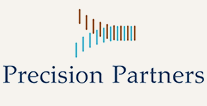We all pride ourselves on being adaptable and flexible in today’s world. While a reasonable effort, especially in rapidly changing industries, there is some benefit to instilling more rigidity in some areas, especially regarding advancement operations during a project campaign.
An advancement campaign is an organized, targeted fundraising endeavor over a specified time frame. There are different types of campaigns, and despite the size and scope of an organization’s campaign, there are also multiple phases.
There are a few areas in your advancement operations campaign that you should be uncompromising and instill some rigidity—doing so can help you gain clarity.
Here’s what to consider.
Reporting
Everyone agrees reporting is essential during all aspects of advancement, but even more so during a campaign. But the question remains, what do we report and when? When you’re in a campaign—especially an extensive campaign—you need to be uncompromising with how you conduct reporting.
Create a process that is repeatable and consistent, including communication parameters for reporting the “what” and “when.” Delivering a consistent message instills confidence in reporting practices—particularly in executives within the organization as well as your donors. In addition, when your campaign team clearly understands what and when to report, clear and concise reports are produces. This organically eliminates worries about “funny money.”
If you need clarification on reporting guidelines, the Council for Advancement and Support of Education (CASE) released the CASE Global Reporting Standards, which offers global guidance. It has a digital subscription and six country-specific supplements for the first time since its initial publication in 1982. The CASE Global Reporting Standards (previously referred to as the CASE Reporting Standards and Management Guidelines) are a common set of standards, guidelines, and definitions for reporting the results of educational philanthropy activities at schools, colleges, and universities across the globe.
Culture
Another area you should be uncompromising during your advancement campaign is building a strong culture. A strong culture fosters collaboration, encourages questions, and accepts input from all those involved in advancement operations and the campaign. It also creates an atmosphere that inspires as little judgment as possible.
(We recognize you’re dealing with real people, and aspiring a no judgment zone is unrealistic, so we recommend aiming for as little judgment as possible.)
One way to inspire a strong culture is to create a robust and authorizing atmosphere by encouraging self-exploration. This autodidactic environment eliminates the need for “handholding” and empowers self-motivation.
Additionally, your culture should allow your team to be uncomfortable. Discomfort is a catalyst for growth. If you have an environment where everyone matches As with the As and Bs with the Bs, they aren’t uncomfortable or growing.
Mission and Vision
Institutions have a mission statement that’s tried and true. But the person leading the campaign (usually the head of philanthropy officer) may have a different vision. Delivering a consistent message—to donors, supporters, and the board—regarding your mission and vision is critical throughout the campaign.
- Don’t compromise supporting the institution’s mission statement.
- Do be flexible when crafting the vision and how it supports the mission.
A consistent message (especially toward donors) creates momentum and inspires giving throughout the campaign.

